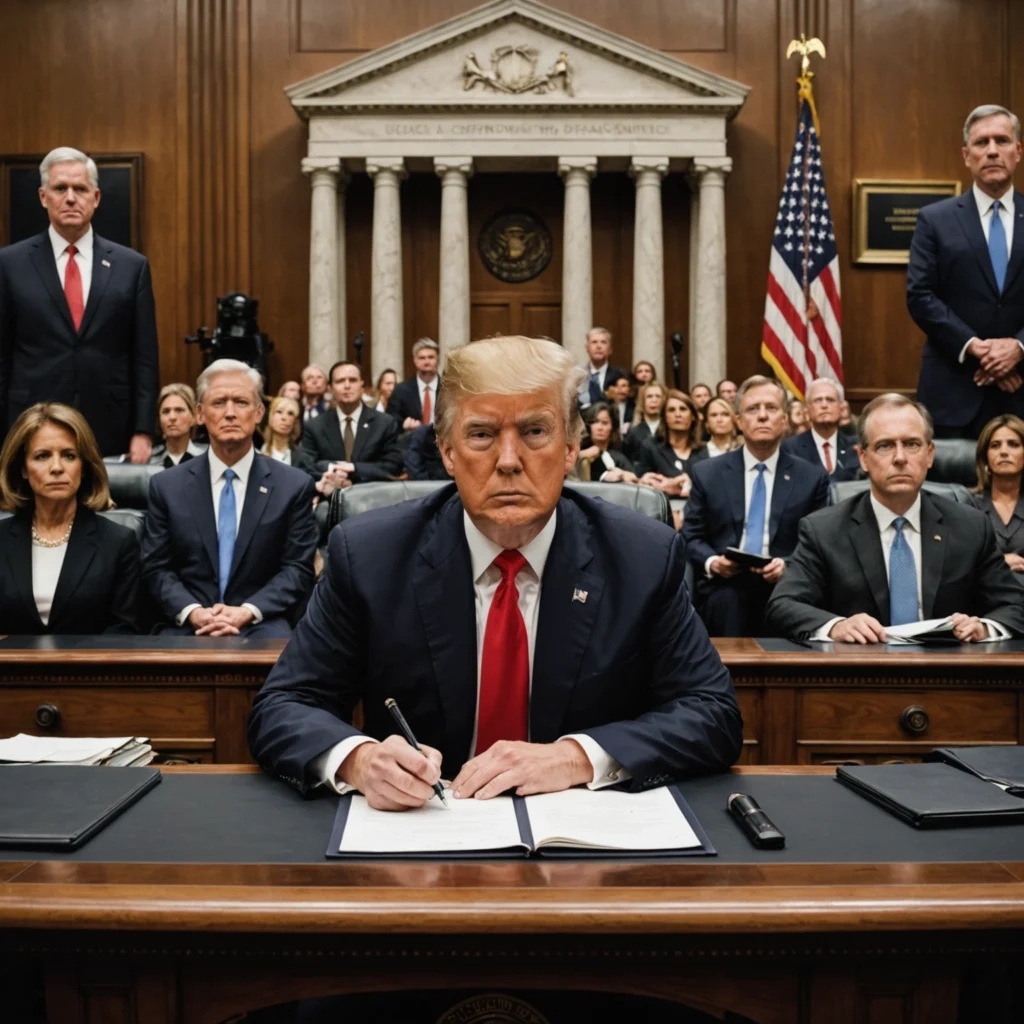
Introduction and Uncertain Beginnings
In a dramatic turn of events, a federal judge halted the Trump administration’s attempt to dismantle the Consumer Financial Protection Bureau. The decision came after intense legal debates, and it stirred controversies across government circles. Moreover, U.S. District Judge Amy Berman Jackson delivered a lengthy opinion, and she warned that the CFPB faced complete elimination in just thirty days unless judicial intervention occurred. Furthermore, critical details emerged during the hearing.
Defining the Battle Lines
Judge Jackson did not mince words when she quoted Elon Musk’s notorious message: “RIP CFPB.” She stressed that the administration’s moves risked dissolving the agency altogether. Transitional phrases such as “furthermore” and “consequently” punctuated her opinion as she ordered the reinstatement of terminated workers and barred any mass contract cancellations. Additionally, she forbade the destruction of CFPB records. Hence, the ruling signaled that the legal system safeguarded institutional integrity even amid aggressive governmental restructurings.
Institutional Turbulence and Strategic Maneuvers
The ruling shined a flash of light on the internal discord at the CFPB. The National Treasury Employees Union and allied groups took swift legal action, arguing that the administration’s strategy violated constitutional separations of powers. Consequently, these unions filed a lawsuit against acting director Russell Vought, who oversaw drastic changes. Also, the union warned that mass layoffs endangered the agency’s ability to function as intended. Similarly, administrative orders to cease examinations and limit supervisory activities created confusion among employees. Therefore, the controversy escalated as legal and political debates intertwined.
Inside the Agency: Chaos and Caution
Agency insiders described the atmosphere as chaotic. Many employees reported distress after receiving orders to halt operations and witness the termination of approximately 1,200 staff out of 1,700, according to internal emails. Interestingly, despite these claims, some senior officials explained that the changes would ultimately streamline operations. Moreover, CFPB’s chief operating officer Adam Martinez recounted how Elon Musk’s Department of Government Efficiency (DOGE) imposed harsh measures that left staff unsettled. In addition, employees experienced a renewed sense of purpose when the Office of Management and Budget intervened, and the agency restarted essential oversight tasks.
Legal Proceedings and Evidentiary Witnesses
During the two-day evidentiary hearing, legal teams presented an array of testimonies. Lawyers argued that without the judge’s intervention, the agency would vanish, leaving consumers unprotected. Transitional words such as “nevertheless” and “similarly” helped illustrate evolving arguments. For instance, one witness under the pseudonym Alex Doe described internal meetings discussing further significant layoffs. Additionally, legal representatives highlighted conflicted accounts that deepened the court’s struggle to ascertain the truth. Consequently, each piece of evidence contributed to a layered narrative of power struggles and administrative overreach.
Key Events and Critical Decisions
A series of events unfolded rapidly as the litigation progressed. The judge’s decision unfolded in clear stages that the administration attempted to accelerate. This narrative emerged from judicial orders and administrative memos. Notably, several CFPB offices resumed work shortly after Mark Paoletta, the agency’s chief legal officer, clarified operational expectations. Simultaneously, staff received messages to continue fulfilling statutorily required tasks. The following bullet list summarizes key points:
- CFPB’s operations halted abruptly.
- Termination of numerous probationary employees occurred.
- Judge Jackson ordered reinstatement of workers.
- Destruction of records received an injunction.
Each measure underwent intense scrutiny as legal teams and agency staff adjusted to the evolving crisis.
Timeline of the Legal Stand-Off
Below is a numbered list outlining the sequence of major actions:
- Elon Musk’s DOGE makes a provocative entrance, sparking fears.
- Russell Vought issues orders to cease CFPB operations.
- Internal emails reveal an imminent plan to lay off 1,200 employees.
- A union files a lawsuit to halt these drastic steps.
- Judge Jackson steps in to issue sweeping injunctions.
- Partial site reopenings occur following clarifications from senior legal officers.
These events illustrate the rapid pace at which the administration attempted to reshape the agency. Transitional connectors such as “firstly,” “subsequently,” and “finally” reflect the unfolding nature of these decisions.
Overview Table: Major Milestones
| Date/Period | Action Taken | Impact |
|---|---|---|
| Early February | DOGE arrives, initiating aggressive changes | Increased employee unrest |
| Mid-February | Judge Jackson issues temporary injunctions | Prevents mass firings |
| Early March | CFPB offices resume operations | Restoration of core functions |
This table and the descriptions above reflect a thorough timeline that captured the dramatic power struggles and administrative shifts.
Elon Musk’s Influence and Governmental Efficiency
Elon Musk’s involvement, symbolized by his threatening social media post, fueled further controversy. Political analysts noted that Musk’s dramatic stance brought additional attention to the dispute. Consequently, the presence of his Department of Government Efficiency intensified internal debates. Moreover, officials argued that his involvement mirrored broader trends in governmental reorganization. Also, the administration maintained that its efforts would eventually streamline regulatory duties. Thus, Musk’s public commentary and related actions created a feedback loop that magnified tensions, prompting legal experts to scrutinize every step.
The Future of the CFPB
Many stakeholders now focus on tomorrow’s landscape. Lawyers, employees, and industry experts project that the judge’s ruling will shape future regulatory practices. Meanwhile, the administration continues to refine its strategic vision. Analysts predict that the outcome of this legal battle will set a precedent for future reforms. Additionally, transitional words like “in addition,” “furthermore,” and “consequently” illustrate that the story remains dynamic. Ultimately, observers expect prolonged legal debates and enduring institutional changes that reach far beyond today’s headlines.
Conclusion: Echoes of a Legal Victory
In summary, Judge Jackson’s intervention carved a decisive moment in an ongoing legal and political saga. The ruling not only preserved the integrity of the CFPB but also communicated that no agency would vanish without vigorous judicial review. Moreover, the narrative transformed into a case study for legal scholars and government officials alike. As the legal process continues to unfold, experts monitor every development with keen interest. Finally, the story exemplifies that active legal oversight can withstand even the boldest attempts at institutional reorganization.




